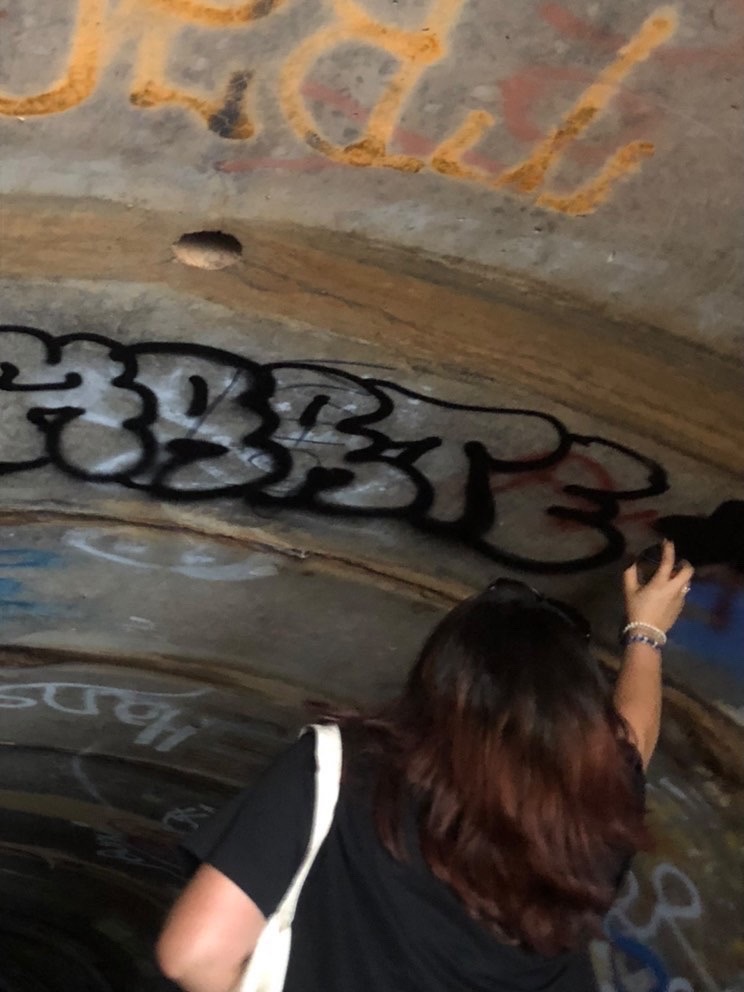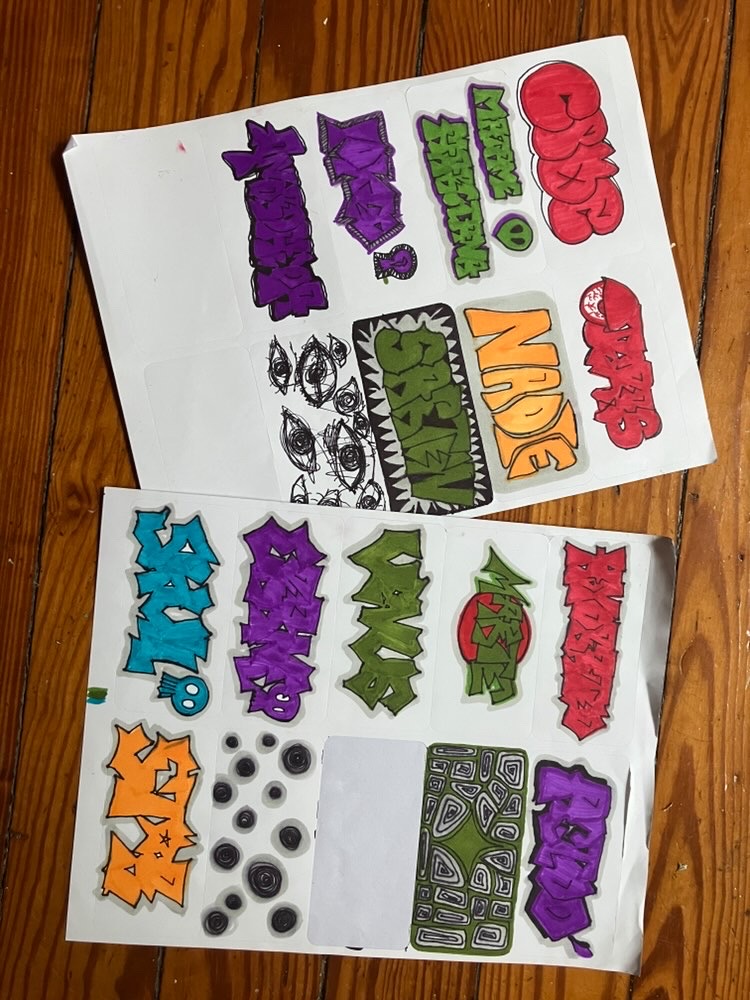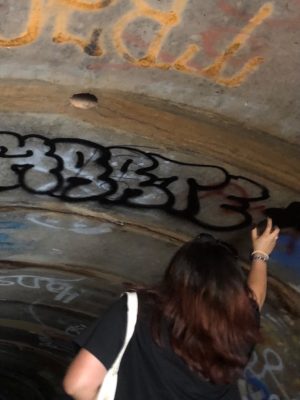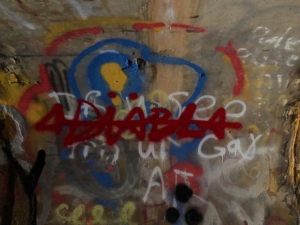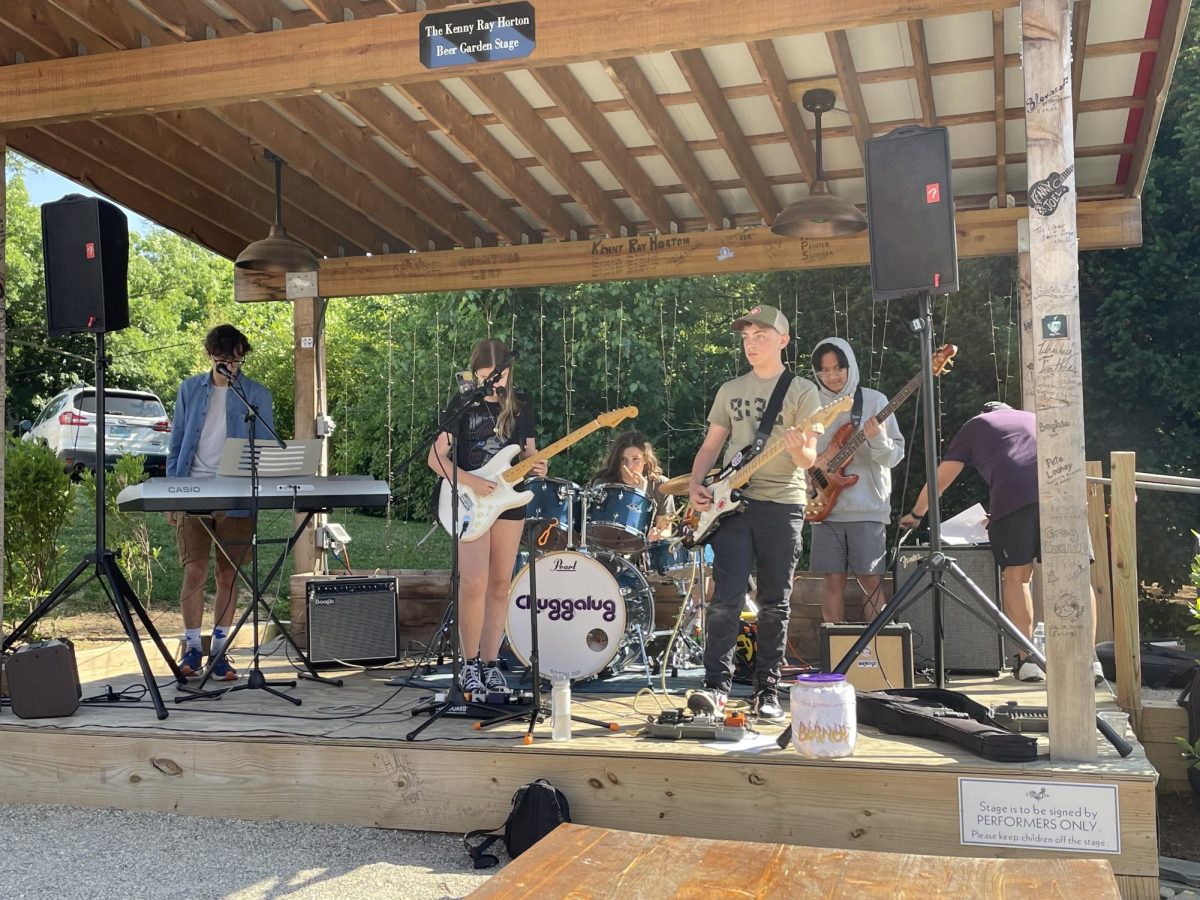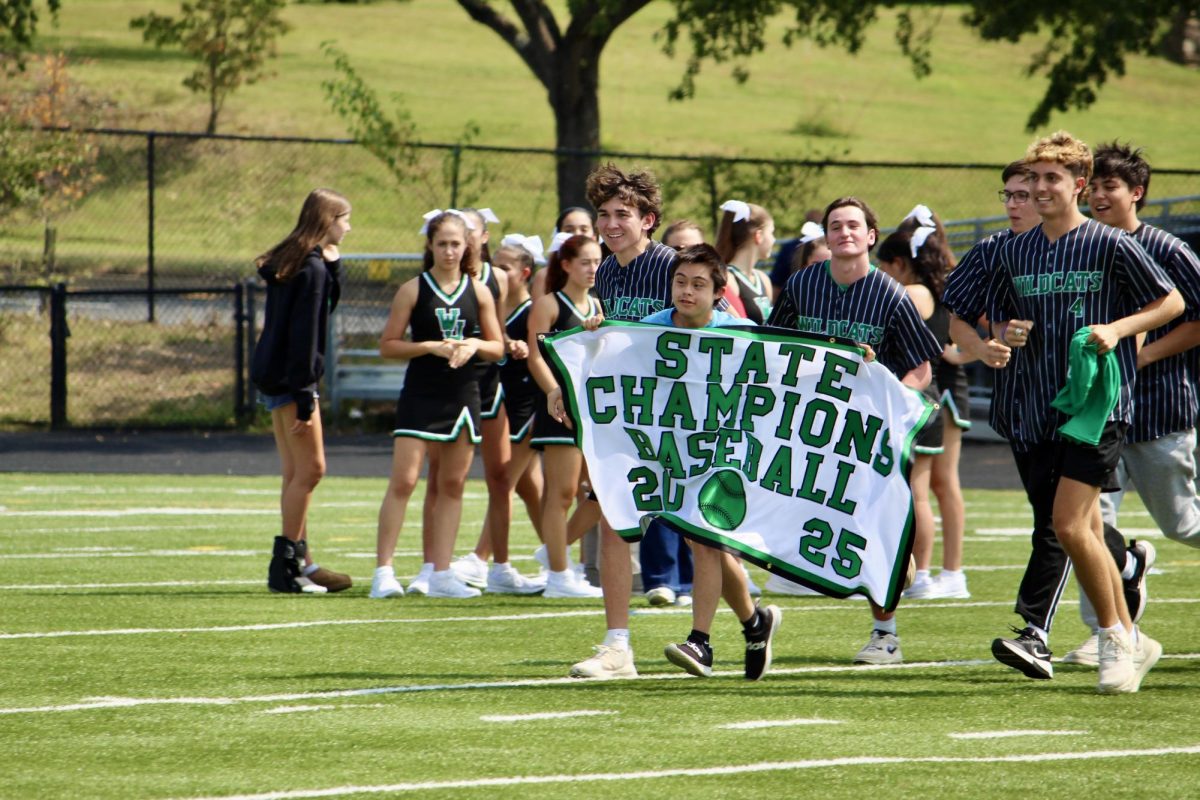The dramatic signatures; the striking lettering; the colorful symbols. You see them everywhere, covering street signs, telephone poles and blank walls. Graffiti has been a long overlooked art form, with many of its creators remaining in the shadows, often by design. They don’t receive Artist of the Issue spotlights, awards or recognition from teachers or parents for their work, but that doesn’t make it any less important to them.
Many students have recounted admiring graffiti in their childhood and those memories shared with friends are what inspired them to try it out for themselves as they grew older.
“I always enjoyed the work on walls driving by. There isn’t much in Maryland, but in Tehran [Iran’s capital] there’s a lot on walls in the city. I tried doing it when I was young and wasn’t really successful and then I moved here. I met my close friends and they [also] did graffiti, which motivated me to learn,” senior Sarvin Nahavandian said.
Artists always stay tapped into the graffiti community around them, taking influence for their own style from their peers and social media.
“A lot of my friends do tagging, so I get a lot of my inspiration from them. There’s some people on TikTok or Instagram that I’ll see… and I’ll like their style. It doesn’t even need to be other taggers, it could be a different kind of art. I just need to like how they do it [to get inspired],” an anonymous junior said.
The main forms of graffiti are spray painting and stickering and both usually involve forming a personal “tag”, or signature. One half of any tag or graffiti is its location. However, artists are always limited by the amount of space available to them in any given spot. This makes it necessary for the community to set their own unwritten rules about what should be put up, even though most members ignore the legal ones.
“I think it’s pretty funny—you’ll see people starting out and see people comment, ‘You’re such a toy [someone who is just starting out and doesn’t know what they’re doing].’ Part of [the mocking] is necessary. You can’t be messing this up so bad. We’re a big group of people—you can’t just be taking up wall space, putting halos over every letter,” the junior said.
Although graffiti is a rebellious art form, artists are cautioned to balance out their own ambitions with reading the room—or in this case—the wall. Other common guidelines are to be original and to make sure that if you do take aspects of someone else’s work, you credit them.
Artists often have to worry more about security and law enforcement than what other members of their community think about their work. In the State of Maryland, vandalism is treated as a misdemeanor punishable by fines equivalent to the value of the affected property or 60 days in jail.
None of the students interviewed have ever been charged with any crime and said that those who had caught them were generally understanding.
“Most security guards will not get too upset at you if you leave quietly and quickly, but I have had my fair share of run-ins with them [around town]. It is not an enjoyable experience,” an anonymous senior said.
Because of this risk, artists are extremely cautious when selecting a location to begin tagging. Typically a sign of a good spot to set up in is one that is already covered in paint or stickers.
“[The best] spots have little to no visibility, are easy to get away from and get to—normally a blank wall or a canvas. Normally bridges and abandoned buildings are key spots,” the senior said.
Once artists make the decision to tag a spot, it doesn’t typically go as quickly as seen in the media. Only skilled and experienced taggers are able to free-hand their work. Most of those starting out need to sketch their tags out before going over it again with their cans. Regardless of the methods, graffiti is an important outlet for those who often aren’t given other places to have their voices heard.
“I think graffiti has a lot of meaning because it gives you a sense of identity. Most of the people who are into graffiti have their own tag. This is something that’s yours and no one else’s. Tagging is a way of expression using the streets,” former WJ student Maya Gaytán Quiroz said.
The real beauty of graffiti is that it is a living artform, constantly changing and changing with the environment it’s in. Every new generation of taggers comes with new ideas, new methods and literally builds on top of what is already standing.
“It’s a natural evolution, going through and painting over the same wall a couple of times. Paint starts to fade; things go away. Some places in the city have been tagged for sixty or seventy years. You can actually see the paint chipping off of it. It’s generally frowned upon to go over somebody else’s work unless it’s something tacky. [But] if you’ve got something better to throw up on the wall, you throw something better on there,” the senior said.
While many of the students spoken to wished to remain in the shadows, they shined a light on how important the often criticized art form is to those who create it.



